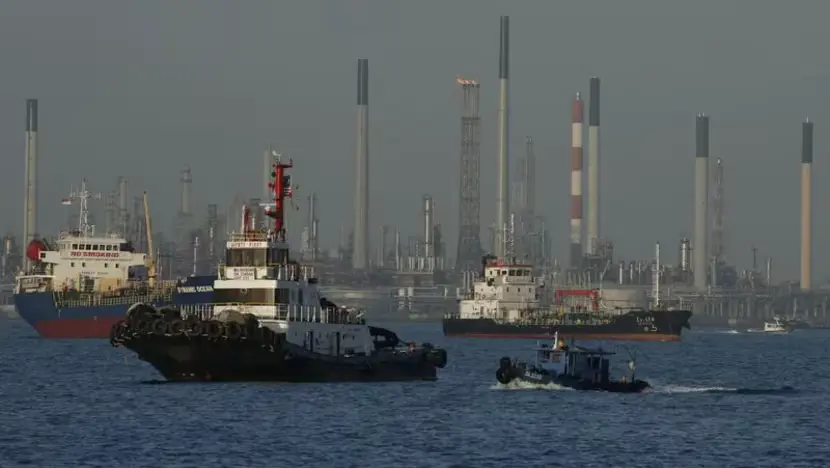Shell Pipeline Leak in Singapore: Latest Updates and Response

On October 20, 2024, Singapore faced a significant environmental challenge with the Shell pipeline leak in Singapore, which raised alarms about the safety of energy infrastructure and its potential impact on the marine environment. The incident, which occurred between Bukom Island and Bukom Kecil, has prompted immediate responses from both Shell and local authorities, highlighting the importance of rapid action in mitigating environmental disasters. This article delves into the details of the leak, the response measures taken, the implications for the environment, and community reactions.
Incident Overview
The leak was first detected early in the morning at approximately 5:30 AM local time. Initial reports indicated that oil was seeping from a land-based pipeline that connects Shell’s facilities on Bukom Island to other operational areas. The Maritime and Port Authority of Singapore (MPA) was notified shortly after the leak was identified, and by around 1 PM, it was confirmed that containment efforts were underway.
Key Details of the Leak
- Location: The oil spill occurred between Bukom Island and Bukom Kecil, an area known for its rich marine biodiversity.
- Time of Detection: The leak was detected at approximately 5:30 AM.
- Containment Status: Authorities confirmed that by midday, the leak had been successfully contained at its source.
Response Measures
Upon confirmation of the leak, both Shell and the MPA initiated several immediate actions to address the situation:
Containment Efforts
Shell quickly deployed containment booms around the affected area to prevent further spread of oil into surrounding waters. These booms are essential for containing spills as they create a barrier that stops oil from drifting away from the source. By isolating the spill, responders can focus on cleanup efforts without exacerbating environmental damage.
Cleanup Operations
In addition to deploying booms, Shell mobilised vessels equipped with dispersants to clean up any visible oil in the water. The MPA also dispatched seven of its own vessels to assist with containment and cleanup operations. Dispersants are chemicals that help break down oil into smaller droplets, making it easier for natural processes to degrade it. However, their use must be carefully managed to avoid further harm to marine ecosystems.
Aerial Surveillance
To monitor the extent of the spill and coordinate cleanup efforts effectively, aerial surveillance was conducted using drones and satellite technology. This high-tech approach allows responders to assess the situation from above and identify areas most affected by the spill.
Safety Measures for Navigation
The MPA issued navigational safety broadcasts advising passing vessels to keep clear of the affected area. Fortunately, there were no reported impacts on navigation safety as a result of this incident. This proactive measure ensured that maritime traffic could continue without interference while safeguarding both vessels and crews from potential hazards.
Environmental Implications
The potential environmental impact of oil spills is a critical concern for local ecosystems. Oil spills can have devastating effects on marine life, water quality, and coastal habitats. In this instance, experts have noted that swift containment and cleanup efforts are essential to minimise these impacts.
Impact on Marine Life
Marine ecosystems are particularly vulnerable to oil spills due to their delicate balance. Oil can coat fish gills, impairing their ability to breathe; it can also affect birds by damaging their feathers and reducing their insulation properties. Furthermore, oil spills can disrupt food chains by contaminating plankton—the foundational element of many aquatic food webs.
Long-term Environmental Effects
While immediate response measures aim to limit damage, long-term effects can linger long after a spill has been contained. Contaminated sediments can affect benthic organisms (those living on or in the seabed), leading to reduced biodiversity in affected areas. The recovery of these ecosystems can take years or even decades depending on various factors such as spill size, type of oil involved, weather conditions, and effectiveness of cleanup efforts.
Community and Government Reactions
Local communities have expressed concern over potential long-term effects on marine biodiversity and fishing activities in Singapore’s waters. Fishermen who rely on healthy marine ecosystems for their livelihoods are particularly anxious about how this incident may impact their catch.
Environmental Advocates’ Concerns
Environmental advocates are calling for stricter regulations on pipeline management and greater transparency from companies regarding their safety measures. They argue that incidents like these highlight systemic vulnerabilities within energy infrastructure that need addressing through improved regulations and oversight.
Governmental Oversight
The Singapore government has reiterated its commitment to maintaining high standards of environmental protection. Agencies involved are expected to conduct thorough investigations into how such leaks occur and what preventive measures can be implemented moving forward. This includes reviewing existing protocols within Shell’s operations as well as broader industry practises.
Lessons Learnt
The Shell pipeline leak in Singapore serves as a stark reminder of the vulnerabilities associated with energy infrastructure. Each incident provides an opportunity for stakeholders—companies, regulators, and communities—to reflect on current practises and identify areas for improvement.
Enhancing Safety Protocols
In light of this incident, there will likely be renewed discussions about enhancing safety protocols within energy companies operating in Singapore. This could involve more rigorous inspections of pipelines and facilities, better training for personnel handling hazardous materials, and improved emergency response strategies.
Community Engagement
Engaging local communities in discussions about environmental safety is crucial for building trust between corporations and residents. Transparency regarding operational practises can help alleviate concerns while fostering a collaborative approach to environmental stewardship.
Conclusion
As cleanup operations continue following the Shell pipeline leak in Singapore, effective communication between Shell, government agencies, and local communities will be vital in navigating this challenging situation. While immediate containment measures have been successfully implemented, ongoing monitoring will be crucial in assessing any long-term environmental effects.
The lessons learnt from this incident could lead to improved practises that safeguard both human interests and environmental integrity in one of Asia’s busiest maritime regions. As Singapore moves forward from this incident, it is imperative that all stakeholders work together to ensure such events are minimised in the future while prioritising ecological health alongside economic activity.

Huawei Releases the ISP/MSP Business Success Driven by RAMS White Paper

Siam Paragon Bangkok Watch Week 2025 Opens with a Historic Celebration

Apical Joins Industry Leaders to Launch Aceh Sustainable Palm Oil Working Group

Singapore: Report Illegal Ride-Hailing Services Via New Channels

Central Kitchen Meal Model: Singapore Schools Transform Food Service

Cathay Cineplexes Shut Down After 86 Years in Singapore

FairPrice Save Every Day: Your Guide to Unlimited Savings

Huawei Releases the ISP/MSP Business Success Driven by RAMS White Paper

Siam Paragon Bangkok Watch Week 2025 Opens with a Historic Celebration

Apical Joins Industry Leaders to Launch Aceh Sustainable Palm Oil Working Group







